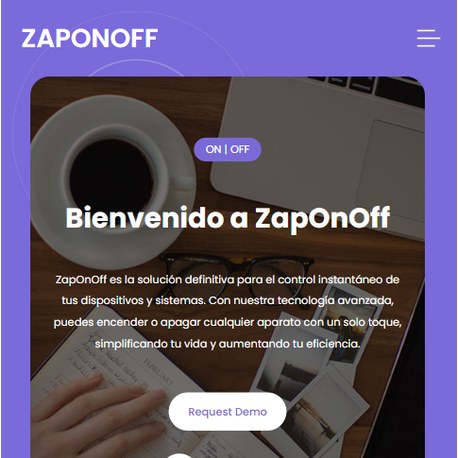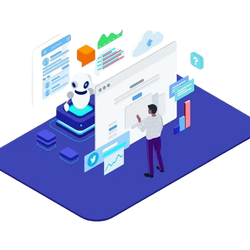More info
By offering instant control solutions, ZapOnOff allows users to turn any device on and off with a single touch, simplifying its management and optimizing efficiency.
Project Objectives
1. Provide Instant Control: Give users the ability to manage their devices quickly and easily, without technical complications.
2. Optimize Energy Consumption: Facilitate efficient energy management in homes, offices and industries, contributing to sustainability.
3. Improve User Experience: Create an intuitive and friendly interface that simplifies interaction with devices.
4. Smart Automation: Allow users to schedule and automate their devices to work according to their specific needs.
Project Components
1. Digital Platform:
- Mobile Application: An app available for iOS and Android that allows users to control their devices from anywhere.
- Web Control Panel: A web interface where users can manage all their devices and automations.
2. Smart Devices:
- Smart Switches and Plugs: Physical devices that connect to the electrical network and allow remote control of lights, appliances and other devices.
- Sensors and Actuators: Additional components that offer advanced functionalities such as motion detection, temperature and more.
3. Robust Backend:
- Cloud Infrastructure: Servers and cloud services that guarantee the availability, security and scalability of the platform.
- Integrated API: Programming interfaces that allow integration with other systems and devices, expanding the functionality of ZapOnOff.
4. Automation and Scheduling:
- Custom Rules: Allows users to create rules and conditions to automate the behavior of their devices.
- Schedule Scheduling: Possibility of scheduling on and off at specific times, adapting to routines daily.
Featured Features
- Remote Control: Device management from anywhere through the mobile application or web interface.
- Intuitive Interface: Easy-to-use design that does not require advanced technical knowledge.
- Notifications and Alerts: Real-time notifications about the status of devices and possible problems.
- Integration with Virtual Assistants: Compatibility with Alexa, Google Assistant and other voice assistants for even easier control.
- Security and Privacy: Advanced measures to protect user data and privacy.
Benefits for Users
- Convenience: Full control over devices without needing to be physically present.
- Energy Savings: Reduction of energy consumption through efficient device management.
- Improved Security: Possibility of simulating presence at home and receive alerts about unexpected movements or status changes.
- Flexibility: Adaptation to different needs, from smart homes to complex industrial applications.
Implementation Plan
1. Development and Testing:
- Development Phase: Create the digital platform, devices and backend.
- Pilot Testing: Perform tests in controlled environments to ensure functionality and reliability.
2. Initial Launch:
- Marketing and Promotion: Campaigns to publicize ZapOnOff and its benefits.
- Initial Distribution: Availability of devices and download of the application.
3. Expansion and Continuous Improvements:
- User Feedback: Collect and analyze user opinions to continuously improve.
- New Features: Add additional features and expand compatibility with more devices and systems.





